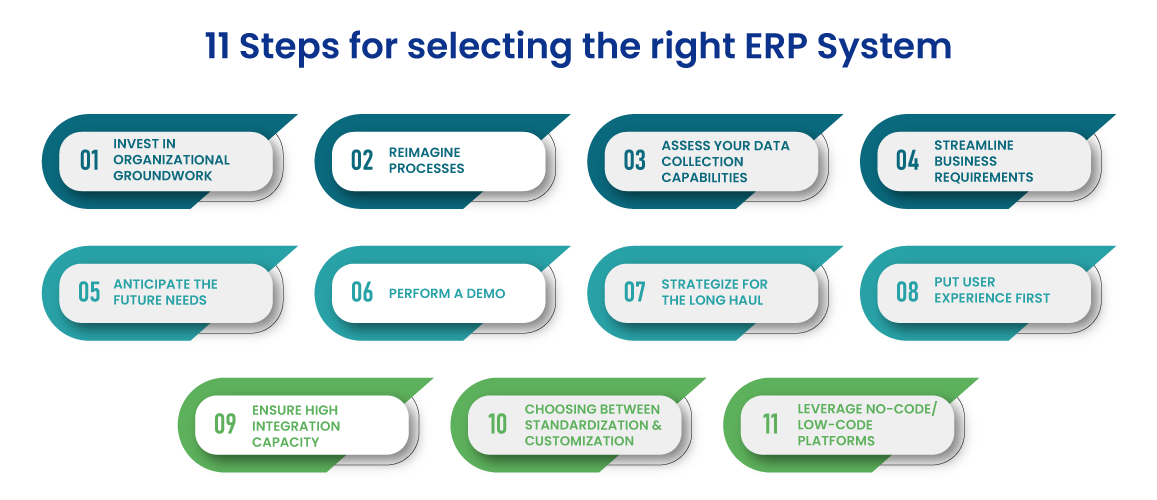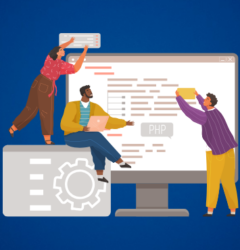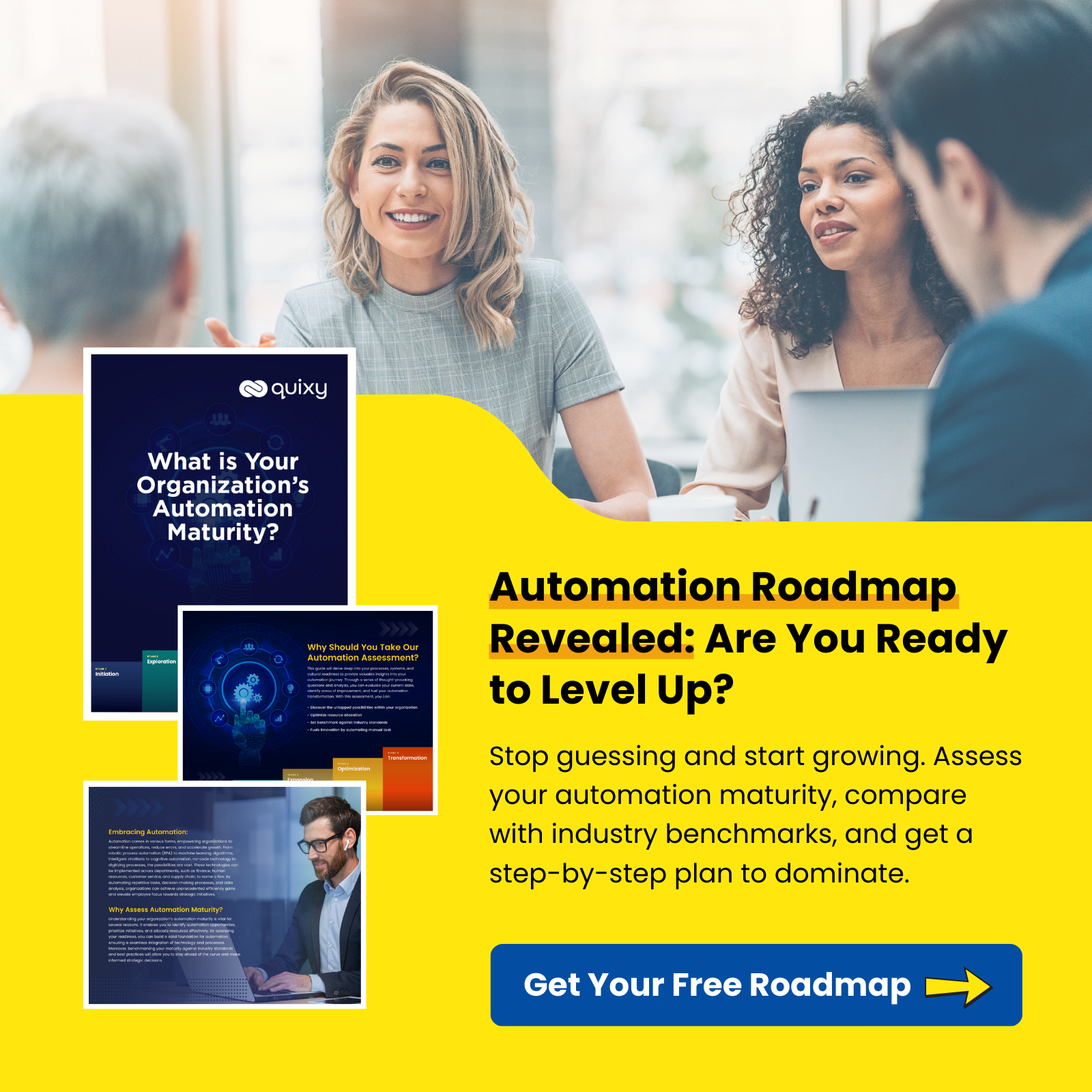
With employees working remotely due to the pandemic, the supply chain and business operations are getting disrupted in a big way. In this scenario, the modern, agile ERP systems backed by refined business processes can be more than a handful for organizations.
Enterprise resource planning is a software system that can manage core business operations ranging from the supply chain, operations, finances, services, etc. It enables you to streamline these processes and ensure higher efficiency of work. With the ever-evolving technology landscape, there are myriads of options to choose your ERP system from. While there are so many COTS ERPs available, there is an increasing possibility of using no-code, low-code tools to build ERPs.
11 Step guide for selecting the right ERP System
The following tips can assist organizations in selecting the right ERP vendor and implementing the new system with minimum effort and maximum gain.

1. Invest in organizational groundwork
Organizations must first lay the groundwork for the vendor selection process by acknowledging political, organizational, change management, and governance issues.
Every organization experiences political conflicts and controversial events as a result of the various regulations and pressures. Then there’s the issue of basic human nature when it comes to change, with some people trying to drive rapid, unprecedented shifts in the business, while others remain opposed to change, fearing that new technologies will interrupt their daily work routines or even take their job.
Companies must resolve political issues before proceeding with an ERP implementation because it has such a broad impact on all aspects of the business.
If an organization is considering building ERP with no-code low-code platforms then a list of questions must be taken into account. For example, who will be building apps? Are there citizen developers? Are employees equipped with the skill of no-code low-code development? What is the IT and business users’ equation? etc.
These answers will work as a foundation for selecting the right ERP vendor for your business.
2. Reimagine processes
Implementing a new ERP system offers an excellent opportunity to rethink and optimize how your organization operates. It is not sufficient to simply compile a list of current business processes and attempt to recreate them in a new ERP system. With a no-code ERP system, the power of creating apps is held with business users. The whole process should be taken into consideration before bringing in no-code, low-code ERP development.
Rather, businesses should consider ERP rollout or migration to be a critical component of their digitization efforts. Companies should consider exercises like journey mapping to investigate new and better ways of streamlining business processes. Organizations should also broaden the scope of their strategic meetings to include department heads and rank-and-file end-users, customers, and partners.
3. Assess your data collection capabilities
Companies considering consolidating a number of point products, locally produced apps, or a legacy ERP system into an advanced, extensive ERP platform must consider their data collection capabilities. For example, for a no-code low-code platform to build ERP and collect data from thousands of sources depends upon the platform’s scaling capacity.
The essential question for them is – how rigorous is the source from which the solution can obtain information in order to provide a single version of the truth? This is especially important as businesses scramble with supply chain issues and require real-time visibility into end-to-end systems, including eCommerce sites, sales, billing, manufacturing, inventory management, delivery, support, or customer service.
4. Streamline business requirements
Organizations understandably want to act rapidly to garner the advantages of the new ERP system, but it is preferable to take the time to get the vendor selection criteria right than to hurry into something that you may end up regretting.
When it comes to vendor selection, large organizations frequently generate a list of hundreds and hundreds of business requirements, and the majority of vendors will tell you that they can meet all of them. Organizations can narrow that list down to a few critical business processes that are most likely to be business differentiators.
5. Anticipate the future needs
Choosing a vendor who will provide the same capabilities as you currently have is never enough, particularly when transitioning to the cloud. Implementing a new ERP system is a game-changing opportunity to use predictive modeling and simulations, to predict potential needs and concerns.
In order to make sure that your business thrives after implementation, you must ask vendors regarding the capabilities of their platforms. Can they help organizations understand what is going on today and what is going to happen tomorrow? Are they capable of anticipating shortfalls or bottlenecks? The answers to these questions can change the perception of an ERP system from merely being a procurement tool to a strategic tool.
6. Perform a demo at the onset of the vendor selection process
Many organizations go through the entire vendor selection process that shows employees what they are getting into. But a more pragmatic way is first to bring in a vendor or two to undertake a demo at the beginning of the process, it will enable employees to visualize the possibilities and scope of the new system while there is still time for feedback and the implementation doesn’t come across being forced on employees without prior notice.
7. Strategize for the long haul
Most organizations require outside assistance to move on to a new ERP system due to internal IT workforce limitations, time constraints, or a lack of skills. They need to make a difficult decision: do they partner with the ERP vendor, a reseller or systems integrator associated with the ERP vendor, or a self-governing technology practitioner or specialist?
Look for a partner with profound industry knowledge, is accessible at the time of need, has a thorough understanding of your business processes, and has a proven record of process expertise. It’s also critical to ensure that the ERP vendor and/or third-party partner has the worldwide presence to meet your needs. Remember that once you’ve decided on ERP, you’re in it for the long haul.
8. Put user experience as the first item on your priority list
It is necessary to consider not just the software, but also how simple it is for end-users to learn and start operating the new systems. The last thing you want to do is implement software that puts people off and makes them avoid it unless they are specifically instructed to use it.
Examine the vendor’s offering of layouts, digital guides, teaching materials, groups, and forums. What is included in the onboarding process? Can end users avail the seIf-service option to get going without relying on IT?
9. Ensure the ERP system has high integration capacity
The ERP system does not function in isolation, and the IT department is still in charge of ensuring that all business processes run smoothly. ERP applications communicate with databases, legacy business apps, other SaaS applications like CRM, and industry-specific apps like quality management in manufacturing. Companies must determine to what extent new ERP systems integrate with the rest of their IT infrastructure and explore different kinds of APIs.
10. Choosing between Standardization and Customization
There is a perpetual tug-of-war between customization and standardization in the ERP world. Organizations are frequently enticed to develop their ERP apps in order to promote effective processes or user experiences. The ability to create its own apps provides an organization with the competitive advantage of delivering the right solutions conveniently. However, the emergence of customized apps can cause issues of shadow-IT.
On the other hand, standardization allows businesses to stay on the vendor path while benefiting from innovations developed by the SaaS provider. However, it restricts users from finding solutions to their unique business problems.
11. Leverage no-code/low-code platforms
Because of the way they are designed, legacy ERP systems are frequently described as rigid monoliths that cannot be upgraded along with the evolving business. Thanks to agile software development and democratization of IT-enabled by low-code/no-code platforms, organizations can reduce their application development life cycle and cater to the changing business requirements more efficiently.
In the past, developers were hesitant to roll out a new ERP update because it could disrupt the business, and people were afraid to make the slightest modification as it could have crippled the entire system. However, as organizations have now become more comfortable with frequently updated SaaS applications, there is a ripe opportunity to apply agile development principles to the ERP system.
Agile has brought a significant shift in ERP deployment. Organizations now don’t plan out every use case and functional piece right away, and it is possible to make those continuous modifications to what is being built and consumed.
Furthermore, with low-code and no-code tools, businesses can reliably improve operational efficiency without affecting the core ERP system. That being said, organizations that pursue this path must also have proper governance in place.
Also read: Next Generation ERP System with Low-Code No-Code
Endnotes
Today business users are more capable than ever. And with technologies like no-code and effective ERP systems, the value creation with work has increased. By giving people the power to create solutions, organizations can make critical changes faster & transform into digital-first structures. Rapid business growth demands for iterations and a rigid ERP system serves as an impediment to growth. While considering growth strategic aspects, the selection of ERP decision should be made.
Frequently Asked Questions ( FAQ’s )
1. How can no-code ERP systems enhance business efficiency?
No-code ERP systems streamline workflows, improve collaboration, and automate repetitive tasks, resulting in increased operational efficiency, faster decision-making, and reduced human error across departments.
2. What are the main benefits of using no-code platforms for ERP development?
No-code platforms enable faster development, reduced costs, and greater flexibility, empowering business users to create and modify ERP applications without extensive technical expertise.
3. Can no-code ERP systems be deployed in both cloud and on-premise environments?
Yes, many no-code ERP systems offer flexibility for deployment in either cloud-based or on-premise environments, depending on your organization’s infrastructure and security requirements.
4. What are the key features to consider when choosing a no-code ERP system?
When selecting a no-code ERP system, look for features like easy customization, integration capabilities, scalability, real-time analytics, and user-friendly interfaces to support both technical and non-technical users.
5. How can no-code ERP systems enhance business efficiency?
No-code ERP systems streamline workflows, improve collaboration, and automate repetitive tasks, resulting in increased operational efficiency, faster decision-making, and reduced human error across departments.
Subscribe
Login
Please login to comment
0 Comments
Oldest
















